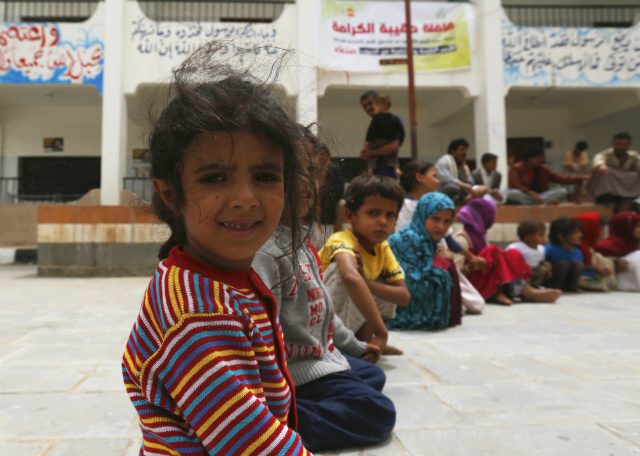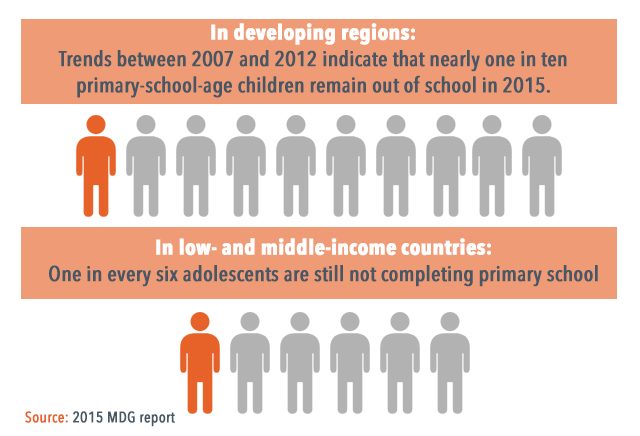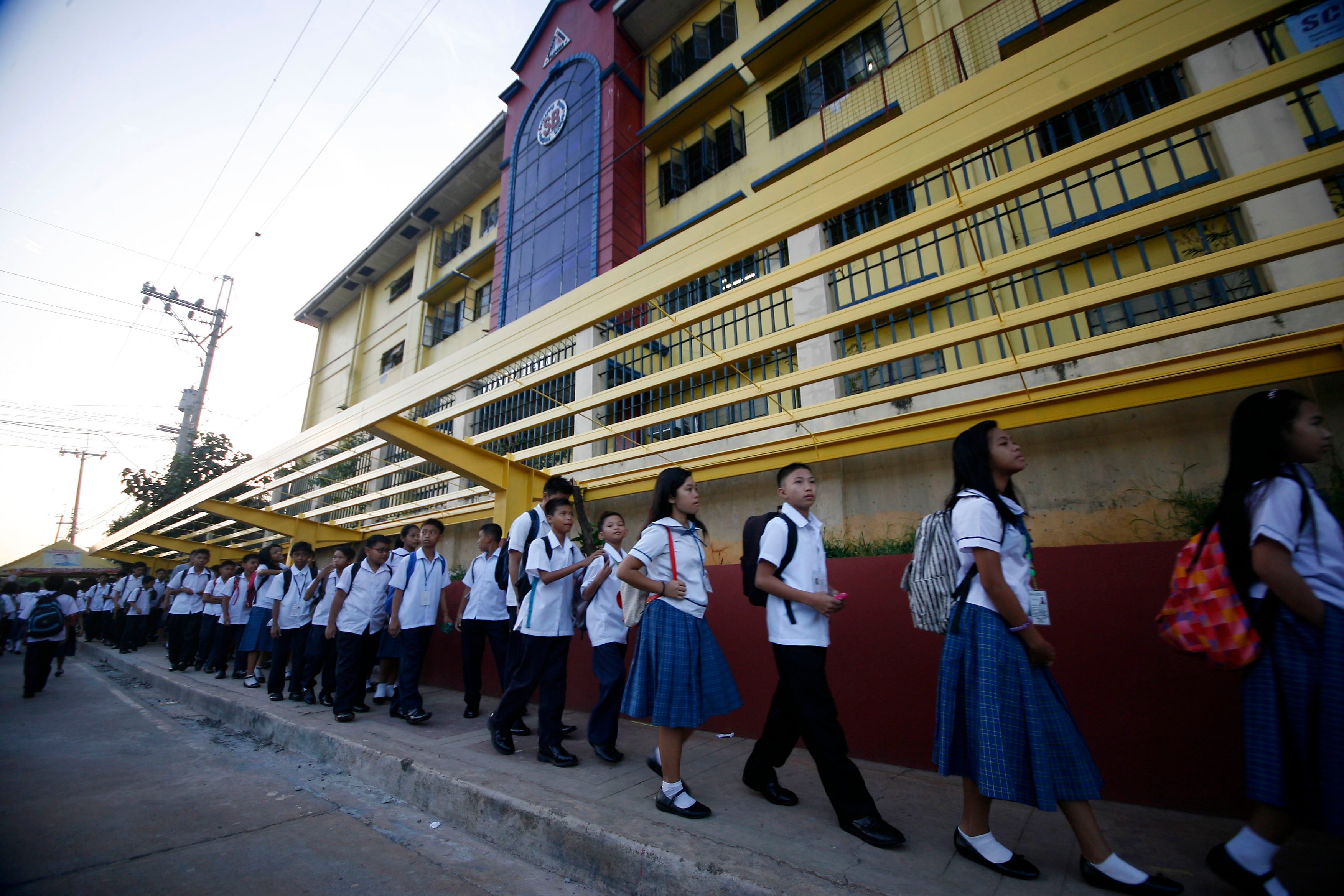SUMMARY
This is AI generated summarization, which may have errors. For context, always refer to the full article.

MANILA, Philippines – Despite the world’s “tremendous progress” in enrolling children in primary school, 57 million children are still out of school globally, according to the final Millennium Development Goals (MDG) report released by the United Nations (UN).
This is almost half of the 100 million out-of-school children in 2000, when the 6 MDGs were identified during the UN Millennium Declaration.
“The global number of out-of-school children has fallen considerably since 1990, although the pace of improvement has been insufficient to achieve universal primary enrollment by 2015,” the report read.
| REGIONS | 1990 | 2000 | 2015 |
| Sub-Saharan Africa | 52% | 60% | 80% |
| Latin America and the Caribbean | 87% | 94% | 94% |
| South-Eastern Asia | 93% | 93% | 94% |
| Caucasus and Central Asia | – | 95% | 95% |
| Southern Asia | 75% | 80% | 95% |
| Western Asia | 84% | 86% | 95% |
| Oceania | 69% | – | 95% |
| Eastern Asia | 97% | 96% | 97% |
| Northern Africa | 80% | 90% | 99% |
| Developed regions | 96% | 97% | 96% |
| Developing regions | 80% | 83% | 91% |
With at least 97% as the threshold to determine universal enrollment, only Eastern Asia and Northern Africa have reached universal or nearly universal enrollment in primary education.
All regions are also “close” to reaching the target, except sub-Saharan Africa, where 33 million children are out-of-school and more than half or 55% are girls. (READ: Only a third of countries reach 2015 education goals – UN)
Meanwhile, in low- and middle-income countries, almost 100 million adolescents about 14 to 16 years old are still not completing primary school. But the proportion of adolescents finishing primary school is projected to reach 84%, from 70% in the early 1990s, and 81% in 2008.

Literacy, inequality
YOUTH LITERACY RATE (2015)
MEN: 93%
WOMEN: 90%
Source: 2015 MDG report
The good news is that with increased attendance in primary and secondary school globally, more young people ages 15 to 24 can now read and write.
The youth literacy rate went up to 89% in 2010 from 83% in 1990, and historical trends suggest this will go up further to 91% by the end of 2015. The greatest improvement was seen in Northern Africa and Southern Asia, especially among women.
But 103 million young people are still illiterate in 2015, although this is much fewer by 22 million compared to 2010 figures.
The UN report also noted that household wealth remains a key factor in determining whether a child will likely attend school.
Compared to children from rich households, those in the poorest households were:
- 4 times likely to be out of school (in 63 developing countries) – 21.9% vs 5.5%
- 5 times likely not to complete primary school (in 73 developing countries) – 34.4% vs 6.5%
The average out-of-school rate in rural areas were also twice as high (16%) compared to urban areas (8%).
Beyond 2015
“Achieving universal primary education will require renewed attention in the post-2015 era, just as the global community seeks to extend the scope to universal secondary education,” the report read.
Going forward, countries are urged to craft interventions tailored to the needs of specific groups of children:
- girls
- children belonging to minorities and nomadic communities
- children engaged in child labor
- children living with disabilities
- children living in conflict situations or in urban slums
The UN also called on nations to invest in quality of education while ensuring a sustainable source of funding.
And in keeping with the new sustainable development agenda, countries will also have to come up with strategies to “directly assess” children’s mastery of skills taught in school, and whether schools are teaching skills needed in the 21st century. – Rappler.com
Add a comment
How does this make you feel?

There are no comments yet. Add your comment to start the conversation.